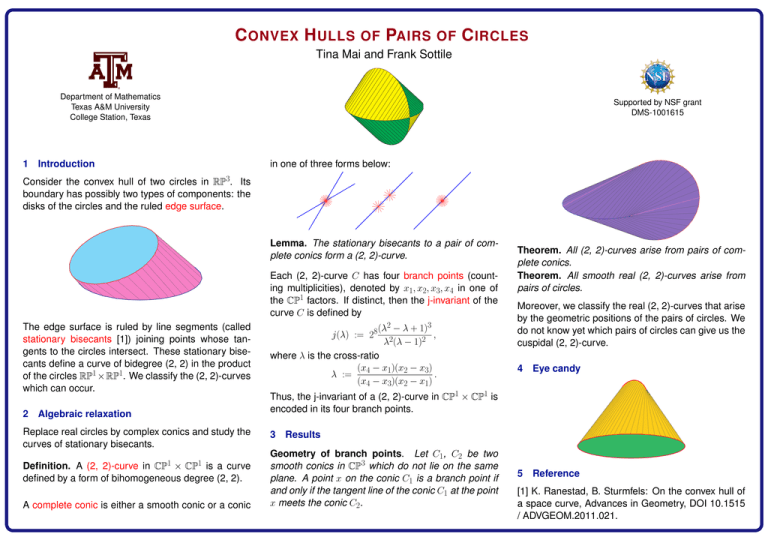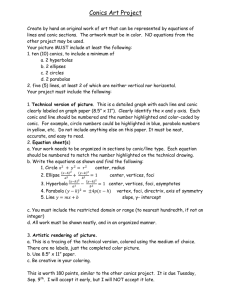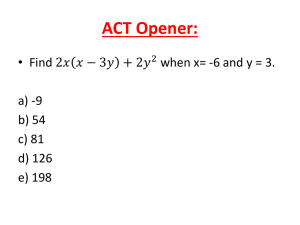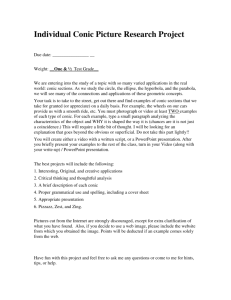C H P ONVEX
advertisement

C ONVEX H ULLS OF PAIRS OF C IRCLES Tina Mai and Frank Sottile Department of Mathematics Texas A&M University College Station, Texas 1 Supported by NSF grant DMS-1001615 Introduction in one of three forms below: 3 RP . Consider the convex hull of two circles in Its boundary has possibly two types of components: the disks of the circles and the ruled edge surface. Lemma. The stationary bisecants to a pair of complete conics form a (2, 2)-curve. Each (2, 2)-curve C has four branch points (counting multiplicities), denoted by x1, x2, x3, x4 in one of 1 the CP factors. If distinct, then the j-invariant of the curve C is defined by The edge surface is ruled by line segments (called stationary bisecants [1]) joining points whose tangents to the circles intersect. These stationary bisecants define a curve of bidegree (2, 2) in the product 1 1 of the circles RP × RP . We classify the (2, 2)-curves which can occur. 2 Algebraic relaxation Replace real circles by complex conics and study the curves of stationary bisecants. 1 CP 1 CP Definition. A (2, 2)-curve in × is a curve defined by a form of bihomogeneous degree (2, 2). A complete conic is either a smooth conic or a conic 2 − λ + 1)3 (λ 8 j(λ) := 2 , λ2(λ − 1)2 where λ is the cross-ratio (x4 − x1)(x2 − x3) . λ := (x4 − x3)(x2 − x1) Thus, the j-invariant of a (2, 2)-curve in encoded in its four branch points. 3 1 1 CP × CP Theorem. All (2, 2)-curves arise from pairs of complete conics. Theorem. All smooth real (2, 2)-curves arise from pairs of circles. Moreover, we classify the real (2, 2)-curves that arise by the geometric positions of the pairs of circles. We do not know yet which pairs of circles can give us the cuspidal (2, 2)-curve. 4 Eye candy 5 Reference is Results Geometry of branch points. Let C1, C2 be two 3 smooth conics in CP which do not lie on the same plane. A point x on the conic C1 is a branch point if and only if the tangent line of the conic C1 at the point x meets the conic C2. [1] K. Ranestad, B. Sturmfels: On the convex hull of a space curve, Advances in Geometry, DOI 10.1515 / ADVGEOM.2011.021.




